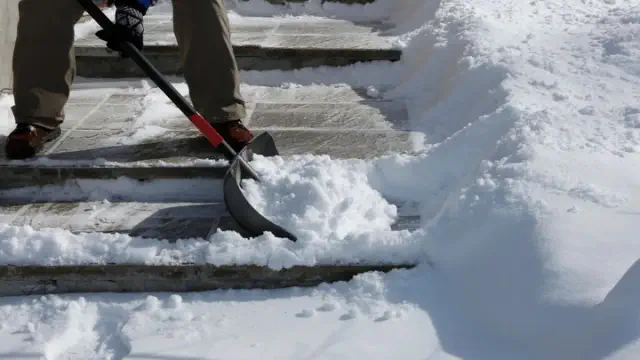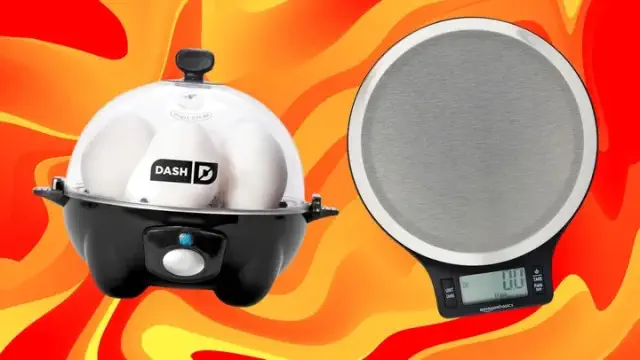Clearing snow can be a tough task – landscaping experts share their top tips for efficient snow shoveling while minimizing the risk of injury.
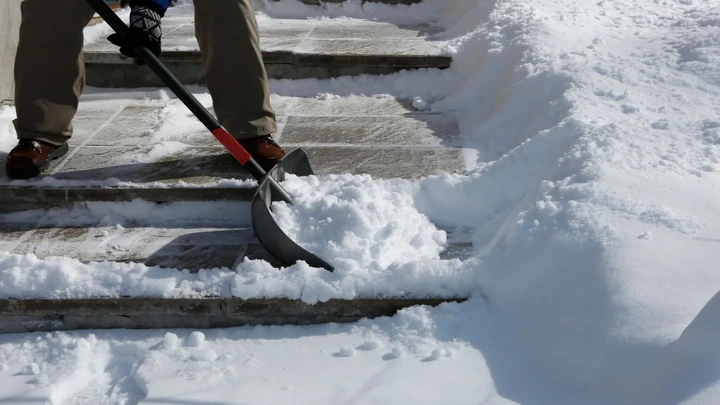
View pictures in App save up to 80% data.
Snow accumulates, obstructing paths, entrances, and driveways, and during the heart of winter, it’s essential to remove it all to keep things accessible.
If you don't have a snow blower on hand, you need to get hands-on and shovel all the snow. However, this can put a lot of strain on your back. Shoveling snow is a common domestic cause of painful back injuries.
I consulted with landscaping experts regarding the most effective strategies for snow shoveling, and they shared numerous tips on how to do it quickly, effortlessly, and, most crucially, safely.
1. How to shovel snow safely and effectively
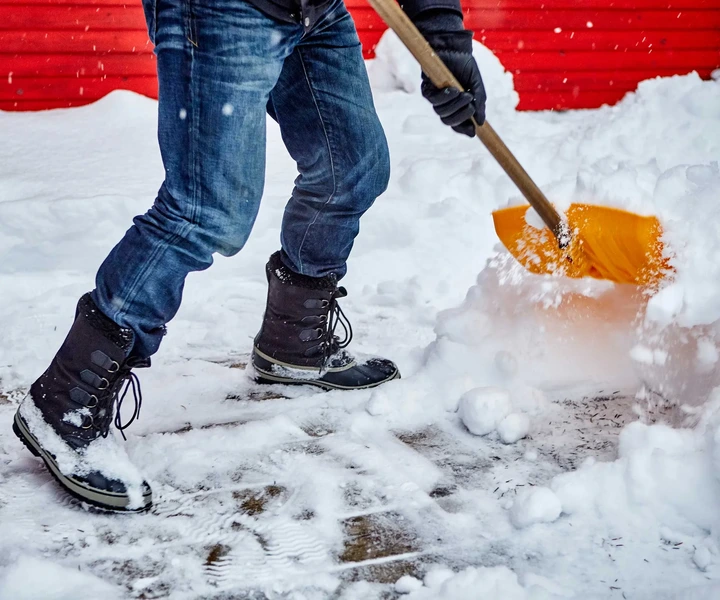
View pictures in App save up to 80% data.
Shoveling snow causes thousands of back injuries every year, so it's crucial to know how to do it safely. Thankfully, the right technique is easy. If you've ever had to do manual handling training, you probably already know the basics.
Outdoor expert Steven Mena says 'As someone who works outdoors, I know it can be hard to deal with snow. To keep things easy on your body, make sure to face the area you're working on and stand with your feet shoulder-width apart for better balance. Instead of bending at your waist, try squatting down by bending your knees and hips. Use your leg muscles to lift the snow. This way helps reduce the strain on your lower back. When you're throwing snow, try not to twist your torso. Instead, just turn your whole body in the direction you want to toss it.'
Snow expert Lorne Chadnick agrees and says 'In my experience, the safest and most efficient way to shovel snow involves thinking of it like working out - your stance matters. Make sure to bend your knees, keep your back straight, and lift with your legs - not your back. Additionally, try pushing the snow instead of lifting it when you can, as this also helps you avoid hurting yourself.'
You can also make snow shoveling much safer by wearing proper clothing. Yard expert Jeremy Yamaguchi says 'One of the most important safety steps for shoveling is preparing and protecting your body ahead of time. For example, put on boots with good traction so that you don’t slip, put on gloves so your hands don’t blister, and put on a brace if you have a bad back.'

View pictures in App save up to 80% data.
Steven Mena serves as the CEO of AAA Fence and Deck, a premier provider of top-notch fencing and decking solutions in Raleigh, NC. With three decades of experience, the company excels in the professional installation of various types of fences, including wood, vinyl, aluminum, chain-link, composite, and pool fences, catering to residential, commercial, and industrial clients.

View pictures in App save up to 80% data.
Lorne established IceTrek following a challenging winter in 2022, during which he had a mishap on an icy porch that worsened a previous injury. In response to this experience, he created IceTrek Rubber Snow Melting Mats to help people move safely over slippery surfaces.

View pictures in App save up to 80% data.
Jeremy is a gardening expert who advises on a range of gardening matters. As the CEO of Lawn Love, Jeremy helps homeowners find quality, reliable lawn care.
2. Tips for Efficient Snow Shoveling
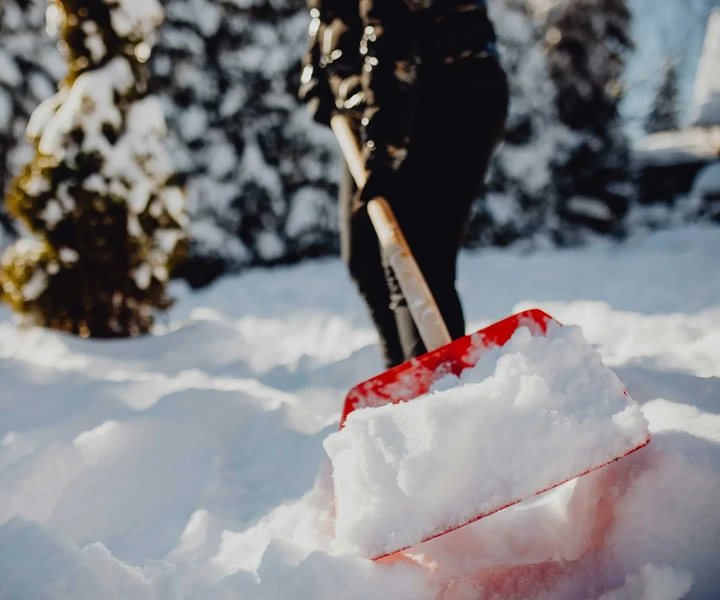
View pictures in App save up to 80% data.
To maximize efficiency while shoveling snow, it's important to save time and minimize the chance of injury. Although it may seem illogical, regularly shoveling smaller amounts of snow tends to be the most effective approach.
Jeremy Yamaguchi advises, "Even during heavy snowfall, it's better to go outside and shovel every 2-3 inches that build up, instead of waiting for all the snow to fall and trying to tackle it in one go."
Removing lighter snow is simpler, so tackling it before it settles into dense, hard-packed snow saves you significant effort later on when the snowfall has ceased.
Certainly, this may not be feasible if it snows during the night. However, if you find yourself waking up to a thick blanket of snow, there are several choices available to you.
According to Steven Mena, when tackling thick or heavy snowfall, it's advisable to begin from the top and gradually move downwards. Handling dense layers can be challenging, so it's wise to divide them into smaller portions to prevent excessive strain.
Regardless of your approach, the most effective way to clear snow is to direct it towards the perimeter of your yard. This method allows snow to accumulate in drifts along the edges, preserving clear areas for driveways and walkways. Additionally, it ensures that you won't spend unnecessary time removing snow from the sides of the yard.
Steven advises, "When clearing your driveway, it's most effective to start from the center and work your way outwards towards the sides. This approach will help you conserve both time and effort."
3. Tips for Choosing the Perfect Snow Shovel
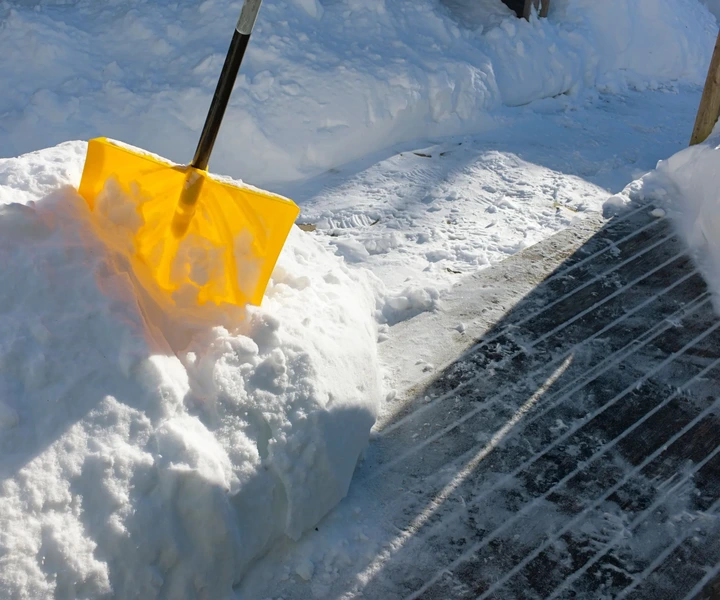
View pictures in App save up to 80% data.
Various types of snow packs and areas necessitate the use of different shovels. The three primary categories are ergonomic shovels, push shovels, and standard shovels.
Steven Mena states, "Choosing the appropriate shovel can significantly impact the efficiency and safety of your work. Ergonomic shovels are particularly beneficial as they are designed to reduce the strain on your back and joints."
Steven mentions, "For those with larger driveways or pathways, a push shovel is highly effective." Push shovels, as the name implies, are made for pushing snow aside instead of lifting and tossing it. The top models resemble wheelbarrows, featuring a single wheel behind the blade that facilitates the snow-pushing process. This design is generally easier on your back, although it may struggle with heavy, compacted snow, and they usually come at a higher price point compared to traditional snow shovels.
If these options seem excessive, a regular snow shovel will do the trick, but keep in mind the tips mentioned earlier. Lifting snow the wrong way can lead to significant back injuries.

View pictures in App save up to 80% data.
True Temper Ergonomic Trail Blazer
This basic snow shovel features a bent shaft design to facilitate the lifting of heavy snow. It's one of Steven's top recommendations; he notes, "The curved handle significantly improves posture, making it ideal for both pushing and lifting snow."
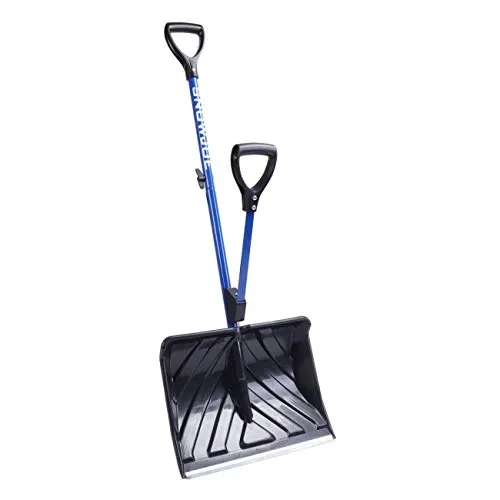
View pictures in App save up to 80% data.
Snow Joe Shovelution Snow Clearing Tool
This shovel comes equipped with an additional handle near the blade, allowing for better leverage when dealing with heavy snow. According to Steven, "It includes a spring-assisted second handle that reduces the strain on your lower back. It's a smart investment for anyone looking to alleviate the physical demands of conventional shoveling."
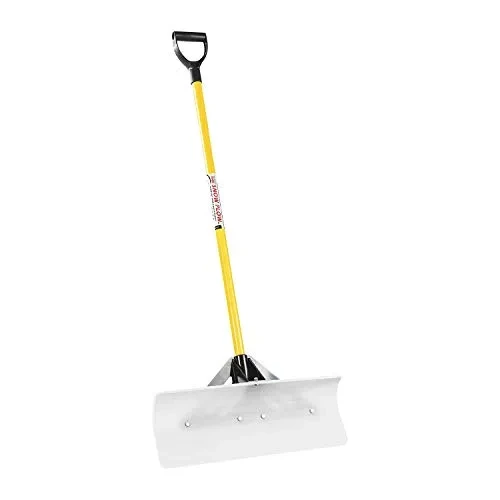
View pictures in App save up to 80% data.
The Snowplow: The Original Snow Clearing Tool
This extra-wide snow shovel is ideal for large driveways and heavy snowfall. According to Steven, "For those with a spacious driveway or pathway, a push shovel like the Snowplow 24-Inch Push Shovel is highly effective. Its sturdy blade and broad design allow for efficient clearing of expansive spaces, though it's more suited for pushing snow rather than lifting it."
4. Add a small amount of cooking oil.

View pictures in App save up to 80% data.
An unexpected trick to make snow shoveling easier is to apply a bit of cooking oil to your shovel. One of the most frustrating aspects of shoveling snow is when it clings to your tool. This not only slows you down but can also lead to injuries; when snow doesn't slide off easily and you lift a heavy load without proper preparation, it puts strain on your back and can result in pain.
You can stop this from happening by adding a little cooking oil to the blade of the shovel. The easiest way to apply this is to use a cooking oil spray like this from Walmart rather than oil from a bottle. You can spritz it right onto the shovel without getting your hands messy.
It doesn't necessarily need to be oil. Everyday DIY lubricants such as WD-40 can be effective too. That said, WD-40 tends to be pricier than cooking oil, so it might be wise to reserve it for your other tasks.
Snow specialist Lorne Chadwick recommends, "Using cooking oil or WD-40 on your shovel can reduce snow adhesion, making your task a bit simpler."
5. Avoid overloading your shovel.
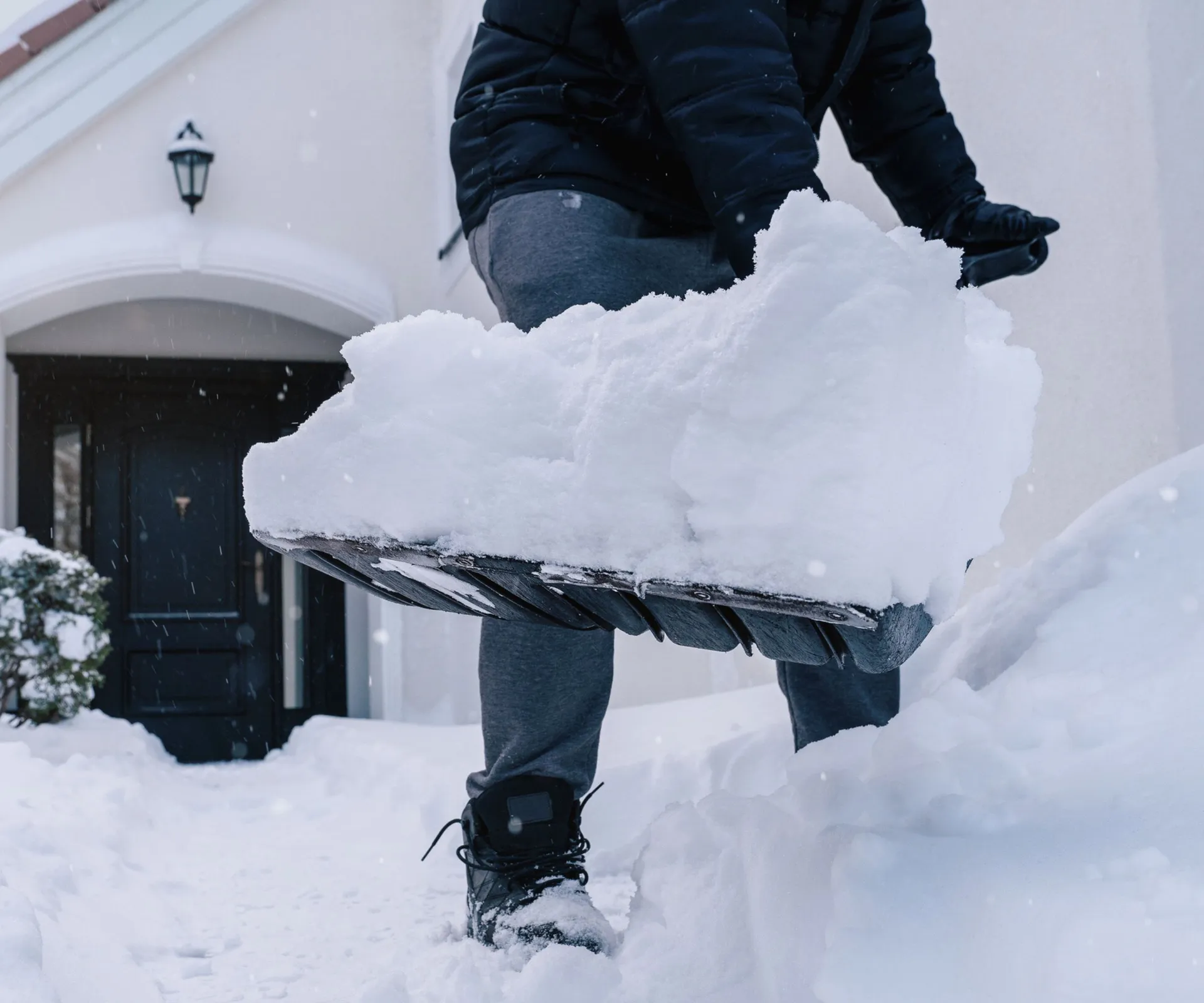
View pictures in App save up to 80% data.
No matter what, avoid overloading your snow shovel. Putting too much snow in it at once can lead to several issues. It's more strenuous on your body to lift, and if you’re using a low-quality plastic shovel, you risk bending the handle.
Clearing snow with a large shovel takes roughly the same amount of time as using two smaller shovels. While the quantity moved is identical in both cases, using the smaller shovels is significantly easier. Therefore, it's best to opt for small, quick shovels for efficiency.
6. Plan in advance
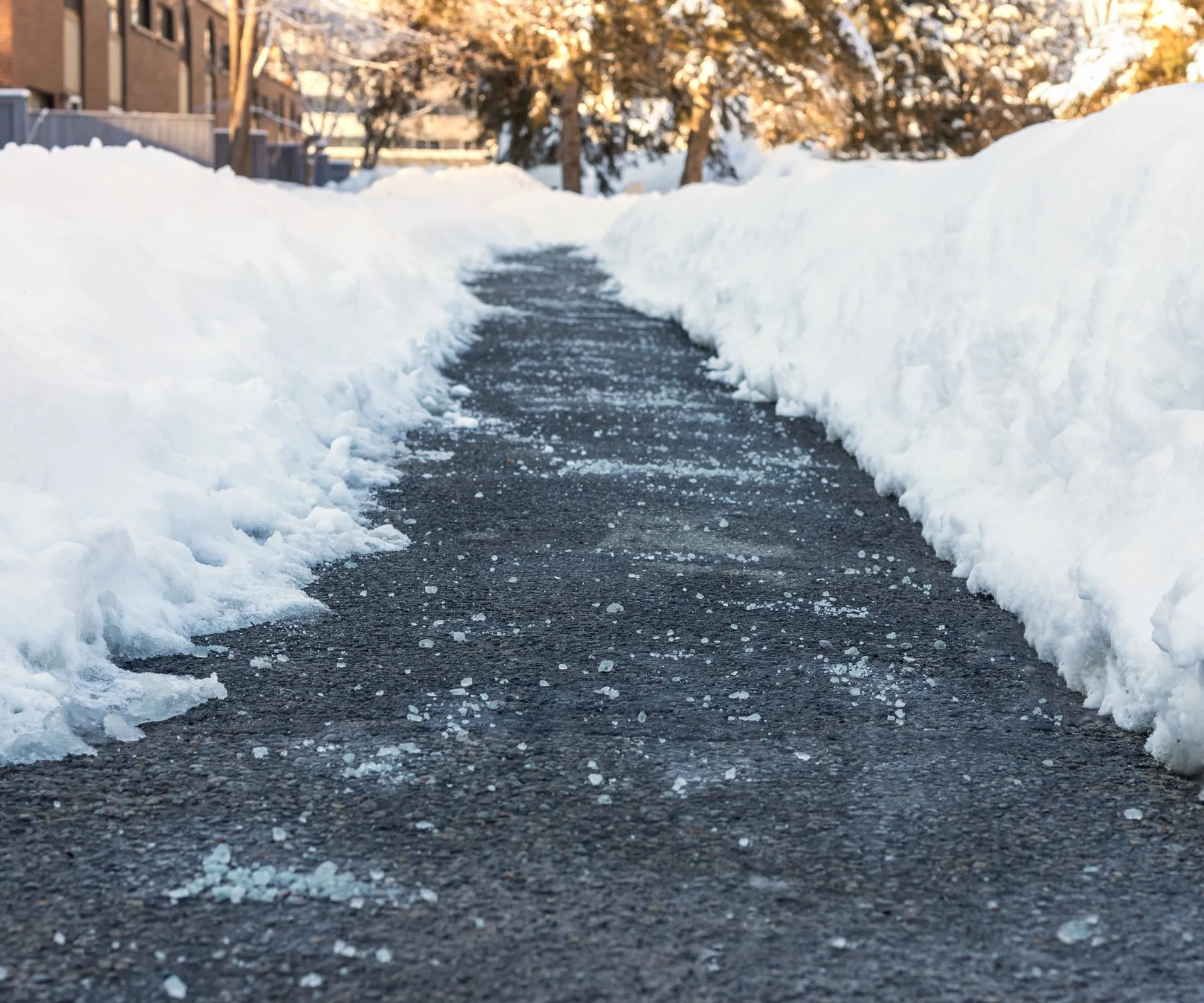
View pictures in App save up to 80% data.
While it may not be much use when you're caught in a snowstorm, one of the most effective ways to simplify the task of shoveling is to plan ahead.
Gritting your decks and driveways to reduce ice build-up is crucial, and it's inexpensive. You can get a 50lb bag of rock salt at Tractor Supply Co. for less than $8. Just spread it over the surface - roughly a cup per square foot - and this will reduce the likelihood of snow and ice building up on your pathways and drives.
You can also buy heated mats for paths and stairs. Lorne Chadnick says 'These are great because they basically do the work for you'. You can find heated mats like this at Amazon and other retailers.
Before you break out your snow shovel, bear in mind that you don't need to clear the entire yard. There are four places you shouldn't clear snow, as they can be dangerous or damage your property.
